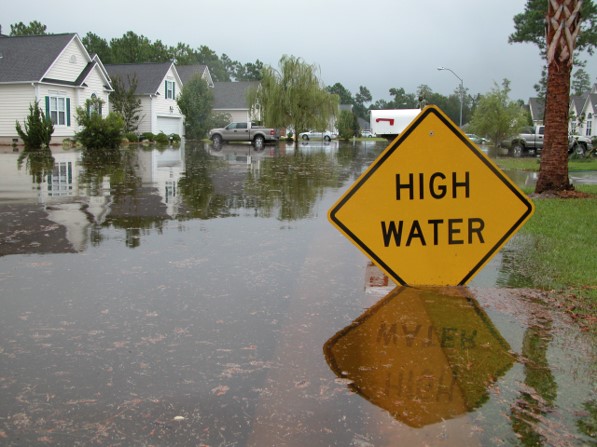
Live in a Low-Lying Area, You Might Need Flood Insurance
El Paso isn’t close to the Atlantic Ocean. It doesn’t lie in a particularly flat area, either. However, just because you might not think the terrain is high-risk, there is still a flood threat in the area. So, if you plan to buy a home, you might find out you need flood insurance? Why is this?
flood insurance? Why is this?
Just because a flood doesn’t happen all the time in your area, that doesn’t mean it won’t. In many cases, floods can strike suddenly, particularly in low-lying areas. Indeed, if you live in this area, you might have a requirement to carry flood insurance. It’s there to help you recover from one of the most-devastating weather phenomena that might strike your community.
The Flood Insurance Industry
When you buy your home, your mortgage lender might require you to carry a homeowners policy. This coverage will protect the property itself, and contents within the home. Therefore, the coverage will help protect both the owner’s and the lender’s financial interest in the property.
However, when you open your homeowners insurance policy, you might find that it doesn’t include coverage for weather-related flooding. Why is this, you ask?
Because of the risks and costs associated flooding, most homeowners insurance policies cannot cover water damage. Therefore, flood insurance has to come as its own policy. Some flood insurance policies are entirely private policies. However, others come backed by the federal National Flood Insurance Program (NFIP). It exists to help fill the coverage gaps that homeowners insurers cannot meet.
However, the NFIP sets certain requirements that mandate that certain homeowners carry flood insurance. Working with communities across the country, the NFIP has mapped a variety of at-risk areas called flood zones. Flood zones have various classification based on how likely a flood is to occur there. In many cases, in the most-at-risk areas, homeowners must carry a flood insurance policy. Lenders may refuse to issue a loan if they fail to do so.
Why You Need Flood Insurance
Flood insurance is essentially property and possessions insurance not included within a standard homeowners policy. You will make a claim on this coverage in case of things like flash flooding, storm surge and river flooding in your area. Therefore, in the event of something like a flash flood happens in your area, you might have to use this coverage to claim things like structural damage in the home, and damaged possessions.
In West Texas, given our dry climate and lack of elevation, the chances of flooding can increase during periods of severe weather. Therefore, homeowners who live in at-risk areas for floods can likely benefit from a flood insurance policy.
Characteristics of At-risk Areas
You might not know how to recognize a flood zone in your community. However, they are often flat areas near bodies of water. During periods of rain, the water levels of local bodies could rise and flood into the surrounding area. Furthermore, the lack of elevation and slope could allow water to pool near structures, rather than washing away.
Given that El Paso sits near the Rio Grande River and its tributaries, there are quite a few flood zones in the area. Plenty of residential areas exist near these zones. Therefore, if you choose to buy a home in a flood zone, you might need a flood insurance policy. Sometimes, the requirement is mandatory. Otherwise, it might only be an option, but a necessary one nonetheless.
Often, your realtor or lender will disclose to you that the home sits in a flood zone. Therefore, you will have plenty of warning to get a flood insurance policy from the outset of homeownership. Otherwise, you can contact both the National Flood Insurance Program® or the City of El Paso FloodPlain Administration Office.
Preventing Floods in Your House
Floods can happen anywhere, at any time. Sometimes, a burst pipe might spill water into your home. In other cases, an overflowing river might penetrate the home.
- In the event of home damage from internal issues, like burst pipes, your standard homeowners insurance will often cover you.
- Following weather-related floods, like river surges, flood insurance will often help you. Standard home insurance likely does not cover these losses.
Still, regardless of what policy covers water damage, each will have its limits. Therefore, the savvy homeowner will do what they can to prevent flood damage in the home whenever possible.
- Ensure that the home has clean gutters and drainage systems. This can help direct water away from the home.
- Check the home’s foundation, basement seals and seals around doors and windows. It can help keep water from penetrating the home.
- Also check the roof for damage and weakness. This can help prevent water penetration during precipitation.
- Keep a close eye on the local weather. Have a few emergency devices on hand, like sand bags and window coverings, to try to keep water out of the home.
If necessary, evacuate the home and don’t return until flood waters subside. Afterwards, call your flood insurance agent at (915) 562-0009 about the problem. They can help you determine the right way to make a policy claim.
Also Read: Steps to Recovering After a Flood at Your Business
Categories: Sin categorizar
Tags: flood insurance, home insurance
